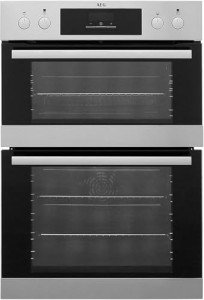The Comprehensive Guide to Built-In Ovens: Maximizing Kitchen Efficiency and Style
Built-in ovens are a necessary feature in modern cooking areas, combining functionality with streamlined design. They supply a seamless look, improve space effectiveness, and typically featured sophisticated functions that raise the cooking experience. This post will explore the various types of built-in ovens, their advantages, important considerations during purchase, and upkeep pointers.
What is a Built-In Oven?
A built-in oven is created to be housed within cabinetry, using an integrated look that conserves counter area and improves the aesthetics of a kitchen. Unlike freestanding ovens, built-ins supply versatility in terms of positioning and can be chosen to match the kitchen's design.
Types of Built-In Ovens
There are numerous types of built-in ovens, each dealing with various cooking requirements:
| Type | Description | Perfect Use |
|---|---|---|
| Single Oven | A basic oven with one cooking compartment. | Everyday cooking, baking. |
| Double Oven | Two different oven compartments, permitting multi-tasking. | Big meals, multi-course cooking. |
| Wall Oven | Installed at eye level, generally with sophisticated features. | Space-saving styles, ergonomic cooking. |
| Stove | Features a fan to distribute hot air, cooking food equally. | Roasting, baking, and more. |
| Steam Oven | Uses steam for cooking, retaining wetness and nutrients. | Healthy cooking, baking bread. |
| Microwave Oven | Combines microwave and regular oven functions. | Quick meals, reheating. |
Advantages of Built-In Ovens
Built-in ovens offer many benefits, that makes them a popular option amongst property owners. Some crucial advantages consist of:
- Aesthetic Appeal: They can fit flawlessly into kitchen cabinets, producing an advanced and consistent look.
- Area Efficiency: By utilizing vertical space, they help take full advantage of kitchen utility, especially in smaller sized areas.
- Advanced Features: Many come equipped with wise innovation, self-cleaning options, and accuracy cooking features.
- Improved Accessibility: Wall ovens can be placed at eye level, reducing the requirement for flexing and making it simpler to monitor cooking progress.
- Adjustable Options: Built-in choices can be found in numerous sizes, surfaces, and designs, allowing tailored kitchen style.
Considerations When Choosing a Built-In Oven
When choosing a built-in oven, there are a number of aspects to consider to make sure that the device aligns with the user's cooking choices and kitchen design:
- Size and Capacity: Measure the setup space to make sure the chosen oven fits. Think about the oven capability based on cooking needs.
- Type of Cooking: Think about the favored cooking methods-- do you bake, roast, steam, or cook rapidly? This will determine the type of oven to choose.
- Functions: Evaluate smart features, temperature level probes, several cooking modes, and cleansing alternatives.
- Energy Efficiency: Look for energy ratings to save money on utility bills, specifically if the oven will be used frequently.
- Budget: Built-in ovens can vary significantly in price, so it's vital to establish a budget and consider long-lasting investment choices.
Upkeep Tips for Built-In Ovens
To lengthen the life of a built-in oven and keep its efficiency, routine maintenance is important. Here are some practical tips:
- Cleaning: Regularly clean down the exterior and interior surface areas. Usage specialized cleaners for stainless-steel finishes.
- Self-Cleaning: Utilize the self-cleaning function periodically to keep the interior pristine; however, prevent frequent usage to prevent wear and tear.
- Check Seals: Inspect the door seals for any damage to prevent heat loss.
- Use Safe Cookware: Ensure that baking sheets and pans work with the particular type of oven to avoid damage.
- Routine Inspection: Schedule professional upkeep checks a minimum of as soon as a year to ensure whatever functions efficiently.
Frequently Asked Questions About Built-In Ovens
Q1: How do I select the ideal size built-in oven for my kitchen?A: Measure
the assigned area for the oven and think about the general capability you need based on your cooking routines.
Q2: Are built-in ovens easy to install?A: Installation can be complicated and often requires professional help, especially for electrical and gas connections. Q3: How often need to I clean my built-in oven?A: It's a good idea to clean up the oven regular monthly and use the self-clean feature periodically based upon use frequency. Q4: Will a built-in oven increase the value of my home?A: Yes, a premium built-in oven can enhance the kitchen's appeal, possibly increasing home worth. Q5: Can built-in ovens
be used for all types of cooking? built under oven and hob packages : Most built-in ovens can manage a variety of cooking techniques, however specific types, like steam or convection ovens, master specific areas. Built-in ovens are a great addition to contemporary kitchens, mixing functionality with style. With their several types, advantages, and personalized options, they cater to varied culinary
requirements while enhancing overall kitchen style. By thinking about size, type, functions, and maintenance, homeowners can choose a built-in oven that serves their cooking style and lifestyle effectively. Purchasing a built-in oven not only raises kitchen aesthetics however likewise transforms the cooking experience, making meal preparation more pleasurable and effective.

